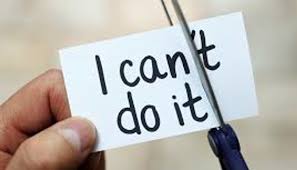I still remember a seemingly trivial moment while volunteering and travelling in New Zealand during my college years. After a hike through the rolling green hills with some travel friends, we stopped in a local shop with some custom design T-shirts. As I was about to leave without being inspired to purchase anything, I got stuck staring at a silly T-shirt that had a drawing of a sheep (naturally in New Zealand) with the simple words “Be Yourself” displayed underneath. I knew this was a message I needed to hang on to at that time, and I also knew this was definitely not a hip shirt that would impress  my new travel friends. Yet, this awareness oddly only increased my motivation to pick it up. Instead of shifting my “self” to meet others’ expectations or approval, something in me wanted to do the exact opposite. Somehow through this the once feared odd looks or non-affirming responses from others (which really weren’t all that bad) were dissolved of much of their power. I had found my way to my first exposure, overtly letting go of a strategy to shift and dismiss my self and presentation for fear of negative reaction or exclusion, and learn that such responses from others can be coped with and don’t have to be all that feared in the end.
my new travel friends. Yet, this awareness oddly only increased my motivation to pick it up. Instead of shifting my “self” to meet others’ expectations or approval, something in me wanted to do the exact opposite. Somehow through this the once feared odd looks or non-affirming responses from others (which really weren’t all that bad) were dissolved of much of their power. I had found my way to my first exposure, overtly letting go of a strategy to shift and dismiss my self and presentation for fear of negative reaction or exclusion, and learn that such responses from others can be coped with and don’t have to be all that feared in the end.

The Importance of Self-Worth
So, what leads us to shift or inhibit our self-expression and so fear the potential negative responses of the other? One answer can be found in a recent research study that identified a common factor underlying both Social Anxiety Disorder and Depression: feelings of low self-worth. Another way to describe this would be to think about what beliefs about ourselves we have learned that make it feel as if there is something flawed and in danger of being exposed or judged by others. These beliefs take the form of self-statements such as “I’m unworthy” or “Inadequate” that we may have learned through significant experiences or relationships in life. Fortunately, alternative ways of seeing our self and acting can be strengthened over time. This happens with a dedicated action plan and development of skills to learn to feel safe being our self in the world. This process can be greatly assisted by working with a qualified Cognitive-Behavioral Therapy provider.

Becoming You, an Action Plan
One starting place to start this shift is to take inventory of all of the subtle to overt ways that you might inhibit, shift, or avoid your authentic self being seen or asserted in a given moment. These are often called “safety behaviors” in that they are done to protect against feeling vulnerable, and therefore potentially exposed and judged. At the same time, they are what holds us back from building up more positive and realistic thoughts and beliefs about our self and our worth. We can also practice cognitive restructuring and self-compassion to help shift how we think about letting ourselves be seen more authentically in the world and how to cope with any potential outcome. Next, create a list of personal goals to challenge and honor your self by letting go of these safety behaviors. Some common examples of this “Be Yourself” assertiveness practice within social situations include:
- Stating a need and/or your true feelings in an interpersonal interaction.
- Joining a group activity, or leaving a group activity based on what you are truly feeling in the moment.
- Offering a differing opinion.
- Correcting someone.
- Asserting a preference in a group.
- Sharing more about yourself than typical.
- Asking for help.
- Elaborate on longstanding characteristics of yours in conversation.
- Compassionately share a mistake you’ve made or area in your life you’re working to improve with others.
- Saying “no” or setting a limit when fear of judgment or conflict might hold you back.
- Purchasing or ordering items that might be different from others.
- Expressing something you value or believe in with others.
Many of the above examples implicitly require us to check in and see how we are really feeling, and what we truly want and need. If actions items such as the ones above still feel far away, try to start by just developing a new habit of intentionally checking in with what those natural feelings and needs actually are in social situations. Over time, we can give the world the gift of knowing and being our self more and more.
Written by,
Robert Yeilding, Psy.D.
NSAC – Bixby Knolls – Long Beach, CA











